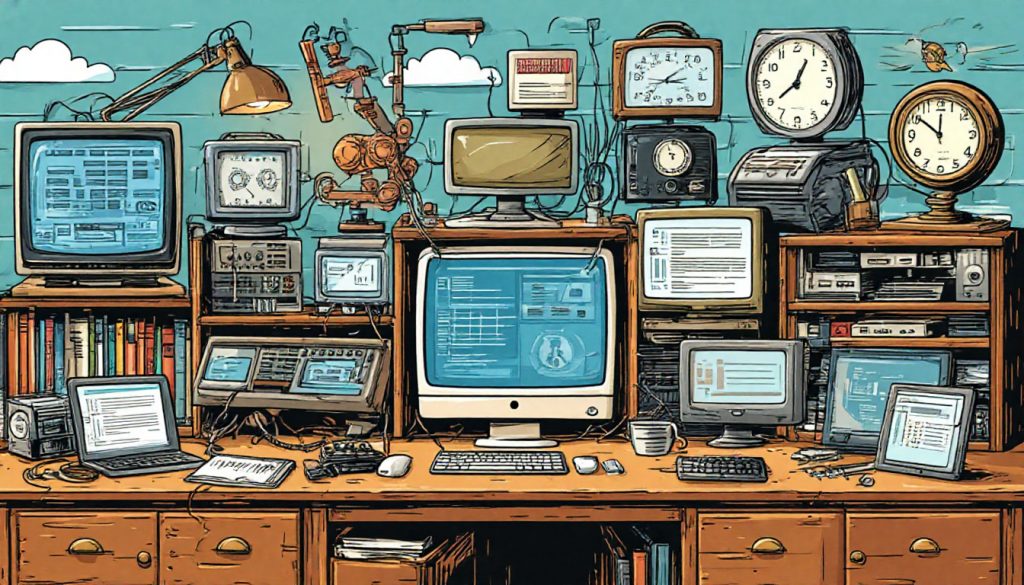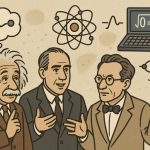Information Technology (IT) has transformed the way we live, work, and connect with the world. From early mechanical calculators to today’s artificial intelligence and quantum computing, IT technologies have evolved rapidly, reshaping every industry and revolutionizing human communication.
1. The Mechanical Era (Before 1940)
The roots of IT trace back to ancient tools like the abacus and mechanical calculators. In the 19th century, Charles Babbage designed the Analytical Engine, a mechanical precursor to modern computers, while Ada Lovelace is credited with writing the first algorithm.
Though these machines lacked electricity, they introduced the concept of automated computation, laying the groundwork for digital systems.
2. The Birth of Digital Computing (1940s–1950s)
World War II accelerated IT development. In the 1940s:
- ENIAC, the first general-purpose digital computer, was built in the U.S.
- Colossus, used by British codebreakers, became the first programmable electronic computer.
These bulky, vacuum-tube machines were slow and massive, but they marked the beginning of electronic computing.
3. The Mainframe Era (1950s–1970s)
As technology matured, businesses and governments adopted mainframe computers. IBM emerged as a dominant force, and punch cards were standard input methods.
During this time:
- The transistor replaced vacuum tubes, making computers smaller and more reliable.
- Early programming languages like COBOL and FORTRAN were developed.
- Databases and operating systems began to appear.
4. The Personal Computer Revolution (1970s–1990s)
A major breakthrough came with the creation of microprocessors in the 1970s, which made personal computers (PCs) possible.
Key milestones:
- 1975: The Altair 8800, a DIY computer kit
- 1981: The launch of the IBM PC
- 1984: Apple’s Macintosh, with a graphical interface and mouse
This period also saw the birth of Microsoft Windows, computer networking, and video games.
5. The Internet Age (1990s–2000s)
The rise of the World Wide Web, developed by Tim Berners-Lee in 1989, connected people globally. It transformed IT into a mass communication tool.
Major developments:
- Websites and email became everyday tools
- Search engines like Google emerged
- Open-source software gained popularity
- E-commerce boomed with companies like Amazon and eBay
6. The Mobile and Cloud Era (2000s–2010s)
With the advent of smartphones and mobile internet, technology became even more personal and ubiquitous.
Key innovations:
- 2007: Launch of the iPhone
- Rise of apps, social media, and cloud computing
- Data storage and processing moved to cloud platforms like AWS, Azure, and Google Cloud
- Growth of cybersecurity and digital privacy concerns
7. The AI and Quantum Computing Era (2010s–Today)
Today, we are entering an era dominated by artificial intelligence, machine learning, big data, and quantum technologies.
Current trends include:
- AI-powered assistants (e.g., ChatGPT, Alexa)
- Autonomous systems and robotics
- Blockchain and decentralized technologies
- Rapid advances in quantum computing
- Ethical debates on surveillance, bias, and job displacement
Glossary
- Microprocessor – A small computer processor on a single chip
- Mainframe – A large, powerful computer used by organizations for bulk data processing
- Graphical interface – A visual way to interact with computers using icons and windows
- Cloud computing – Storing and accessing data over the internet instead of local servers
- Quantum computing – A new form of computing using quantum bits, which can process huge data sets simultaneously
Final Thoughts
The development of IT technologies is a story of human ingenuity, ambition, and innovation. As we step into a future of intelligent machines and interconnected systems, understanding the history behind today’s digital world helps us navigate it wisely—and shape what comes next.


